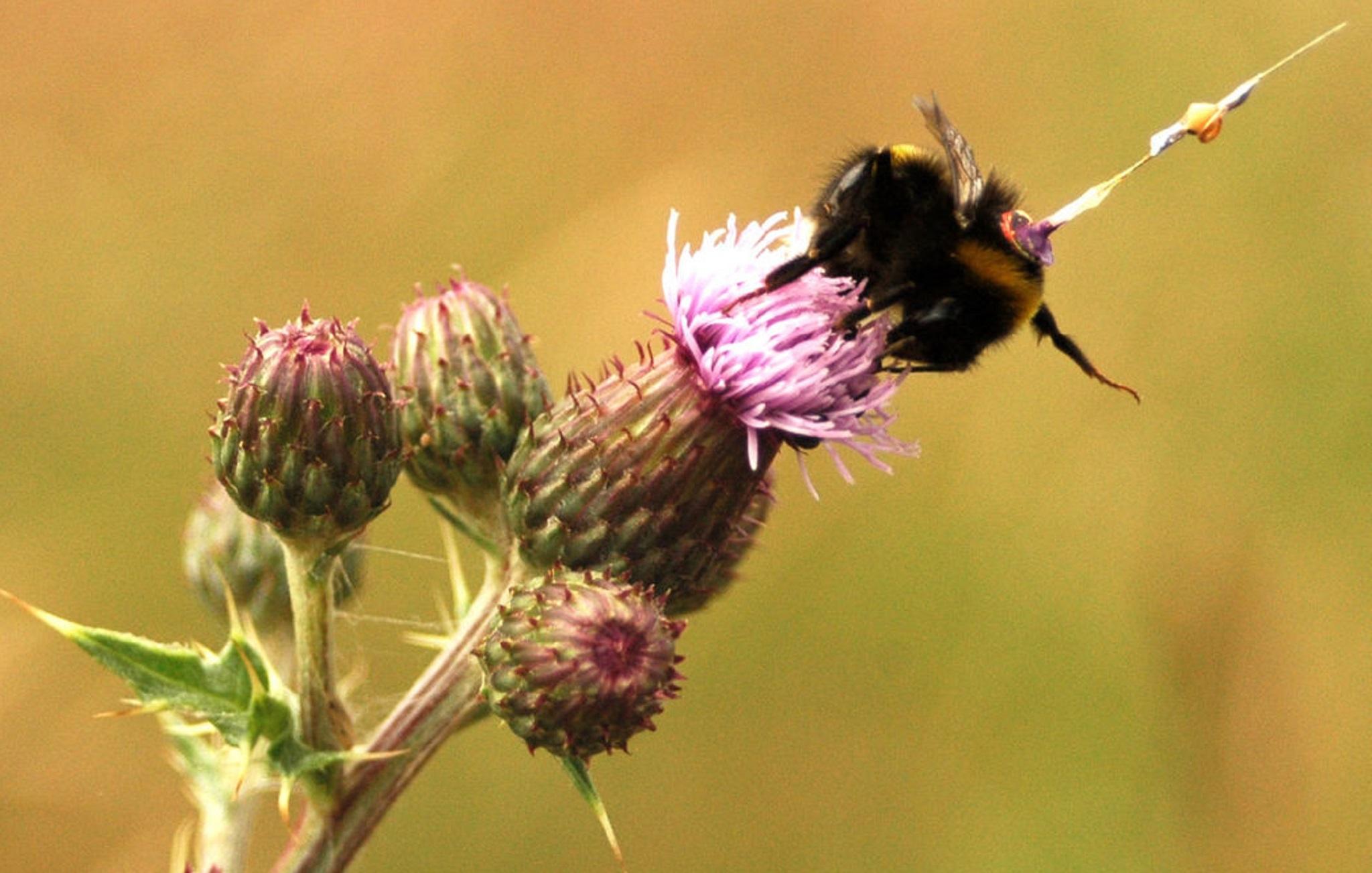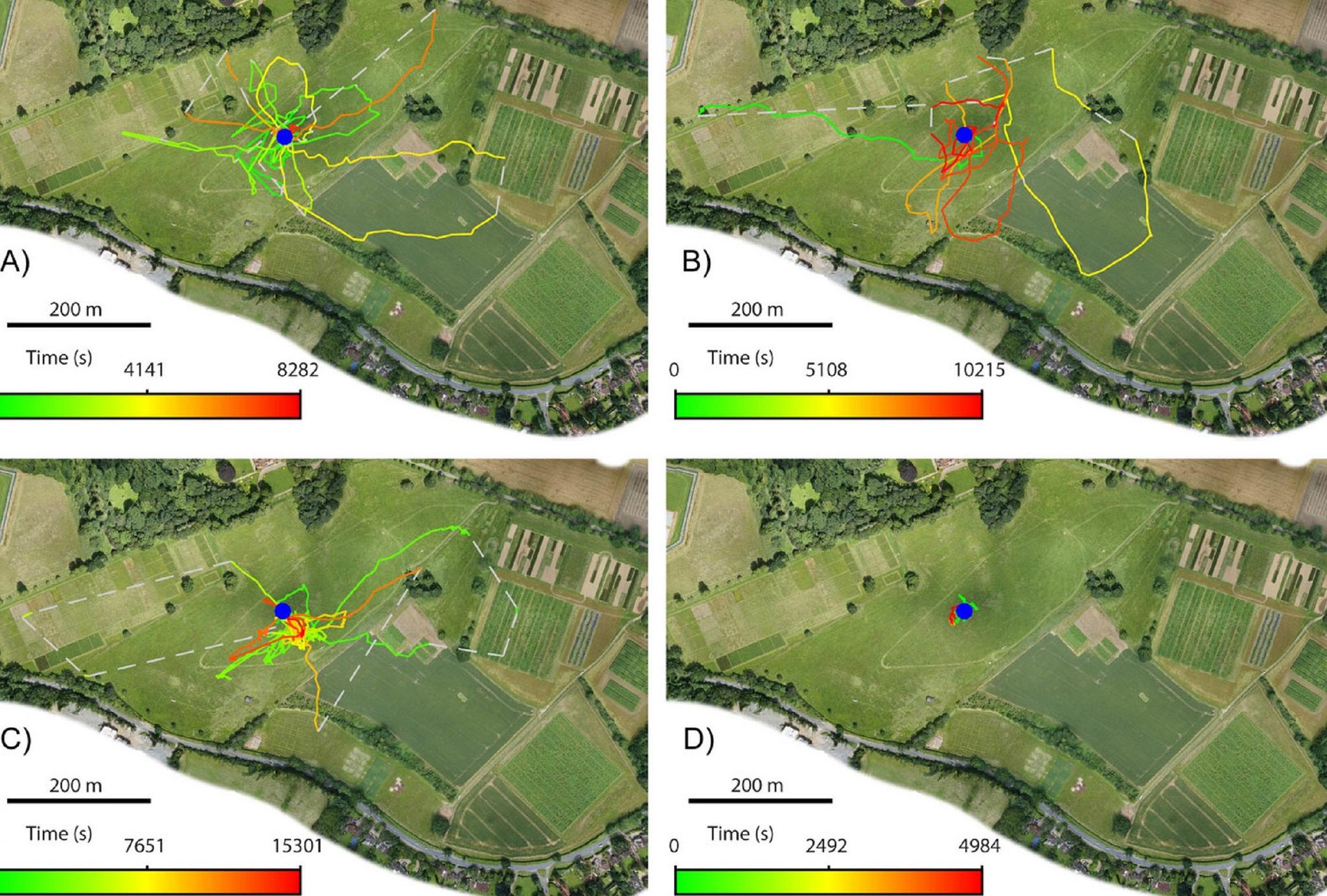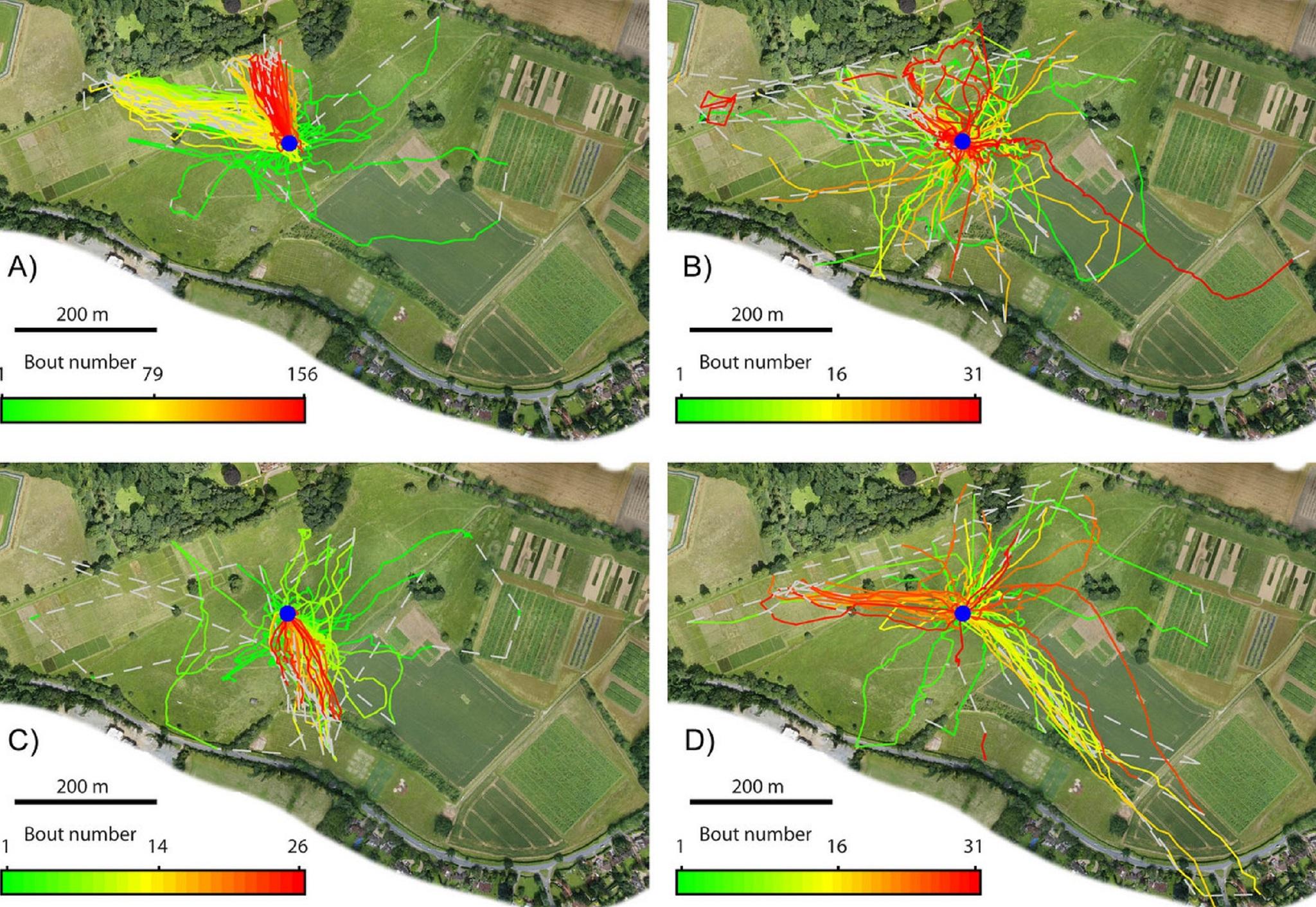Bees are not only workers, they can be shirkers too
A new study which tracked four bees over the course of their lives found a surprising discrepancy in their attitude to foraging for food for the hive

Bees provide us with an invaluable service by pollinating plants, an indispensable part of natural and agricultural ecosystems. This is why declining bee populations are such a big concern. Of course, bees don’t do this as a favour to us – pollination is a side effect of bees collecting nectar and pollen for their nests. But in order to understand bees better, we need to understand more about how they go about finding flowers and deciding how to make the most of them. And this is why I have spent my summers tracking female bumblebees.
Alongside colleagues at Queen Mary University of London and at Rothamsted Research, we followed for the first time every flight of forager bees over the course of their lives. This has given us remarkable insight into the very different strategies taken by different bees in their approach to carrying out their tasks.
From the first time they saw the light of day, emerging from their cells in the comb and knowing nothing of the world around them, we followed four bees as they learned and became seasoned foragers, until their deaths.
Because bees are so tiny, GPS trackers or radio collars are far too large and heavy for them. Instead we used harmonic radar to track the bees, which is excellent at tracking moving objects through cluttered environments full of flowers, hedges, trees, buildings, and other bees. This involves attaching a small, very light electronic transponder to the bee’s back which transforms and reflects the signal in such a way that we can identify the bee. The radar scans the landscape once every three seconds, each time reporting the bee’s position. We used large earth bumblebees (Bombus terrestris) which were bred in captivity, so we knew they were ignorant of the world at the beginning of the experiment. And then we watched their lives unfold over several weeks until, one by one, each left the nest and never returned home.
Observing how the flight of each bee changed throughout her life offers an insight into how bees find food, and how they balance the desire to explore and find new sources of nectar with the need to provide food for the nest.
All our bees began their lives making long, convoluted flights, looping unpredictably around the landscape. They thoroughly surveyed their local area, stopping frequently to sample the flowers available.

However, after only a few such flights most abruptly changed their behaviour, replacing the long exploratory loops with direct, efficient flights to a single flower source they had learned. Most of the rest of their lives was spent diligently exploiting flowers from the locations they had learned.
From recording the bees’ movements we can tell that nearly all discovered their favourite flower patches within their first few flights. One bee abruptly switched her flight path, heading directly toward a place she had discovered on her first ever flight nine days earlier. Until then, she’d never returned, which suggests she was able to remember it all that time.
So it seems that bees change their behaviour, from exploration to exploitation, over the course of their lives. Which is not to say that all bees are identical little automata, though. What really struck us about our bees was how different they were from each other.
While our most diligent bee (A) shuttled back and forth to a single foraging patch, another was a lifetime vagabond (B), who spent most of her time roaming the landscape unpredictably, visiting and feeding in patches she’d never seen before. Our bees differed strikingly in other ways: the number of flights they undertook, the amount of time they spent in and outside the nest, and the favourite areas they chose to feed. These factors must lead to huge differences in the amount and quality of food being contributed to the colony by different bees, so we’re really interested to try to discover how common these different strategies are, and whether the colony gains an advantage from having some bees with a roaming lifestyle, or whether they’re simply freeloaders, supported by their more dedicated sisters.

Ultimately, each of our four bees met their fate between six and 15 days after birth. Two bees disappeared during what looked like typical foraging trips, which led us to suspect that they fell foul of predators such as crab spiders that lurk in flowers waiting to ambush insects. The other two flew off in unfamiliar directions, perhaps flying far enough from what they knew that they were unable to find their way home.
Though watching the flight of the bumblebee is fascinating, practically speaking these insights will help us understand how plant genes flow around the landscape. Insect-pollinated plants reproduce by persuading bees to carry their pollen from one plant to another. When inexperienced bees and vagabonds explore widely, sampling many flowers, they spread plant genes widely compared to when they change to more dedicated pollen and nectar collection.
What we learn about why bees make these choices will help us manage our landscapes to make the most of what bees offer us – and how to help our friends the bees get the maximum benefit from the plants we provide for them.
Joseph Woodgate is a post-doctoral researcher at Queen Mary University of London
This article first appeared in The Conversation. © The Conversation
Join our commenting forum
Join thought-provoking conversations, follow other Independent readers and see their replies
0Comments